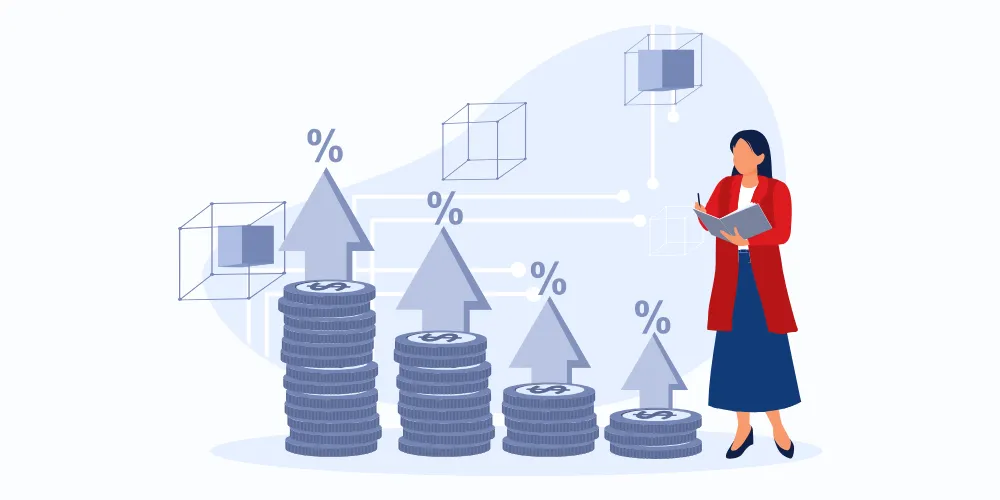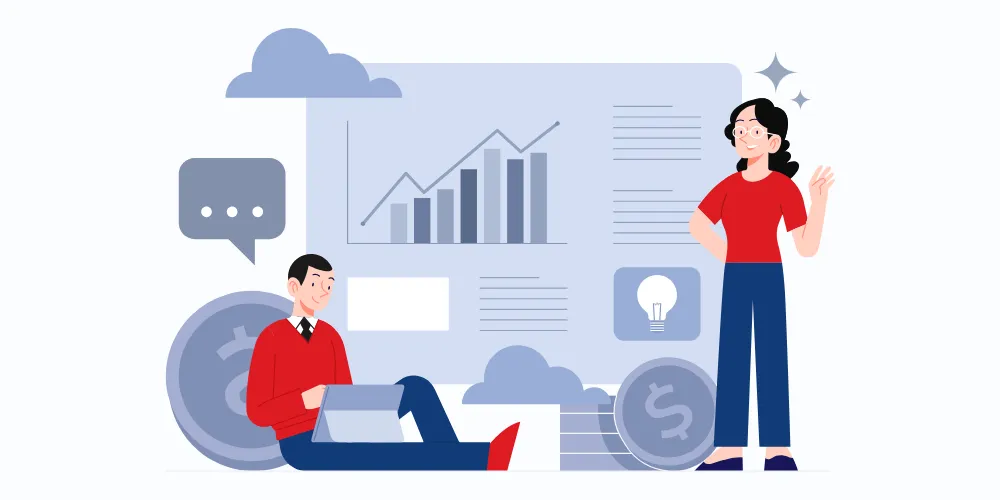This metric helps assess how efficiently a business produces and delivers its products or services. By tracking it over time, companies can spot trends, manage expenses, and make pricing or sourcing decisions. It’s also vital for evaluating gross margin and overall financial health.
Understanding the Cost of Sales Percentage Formula
- Achala Rasal
- May 27, 2025
- 4 min read
- Last updated on Oct 03, 2025
Introduction to Cost of Sales and Its Importance
In the realm of business finance, understanding key metrics that lead to efficient operation and profitability is crucial. One such metric is the 'cost of sales', which plays an essential role in assessing a company's overall financial health. The cost of sales, often considered a key determinant of a business's economic performance, represents the total cost incurred to produce and sell goods or services. By evaluating this figure against sales revenue, companies can gain valuable insights into their profit margins and pricing strategy.
In this context, the 'cost of sales percentage formula' emerges as a vital analytical tool. By measuring the ratio of the cost of sales to total sales revenue, this formula enables businesses to track their cost efficiency and optimize their strategy for improved profitability. Let's delve into what the cost of sales percentage means and how it can be effectively leveraged.
Definition and Basics of the Cost of Sales Percentage
The cost of sales percentage is a financial ratio that indicates the portion of sales revenue allocated to the cost of sales. It represents the amount a company spends to generate sales, directly reflecting its efficiency in cost management.
To clarify, while the cost of sales often overlaps with the concept of cost of goods sold (COGS), they aren't strictly identical. While COGS typically applies to manufacturing and product-based businesses, the cost of sales can also encompass the cost of services provided. Understanding this subtlety helps companies to target the right areas for improvement.
The Cost of Sales Percentage Formula Explained
The cost of sales percentage formula is as follows:
(Cost of Sales / Total Sales) × 100
Here’s how each component works:
- Cost of Sales: The direct costs attributed to producing or purchasing the goods/services sold by the company.
- Total Sales: The total revenue generated from sales activities before any expenses are deducted.
For example, if a company has a cost of sales amounting to $200,000 and total sales of $500,000, the cost of sales percentage is:
($200,000 / $500,000) × 100 = 40%
This means that 40% of the sales revenue is being allocated to cover the cost of sales.
Steps to Calculate Cost of Sales Percentage
Calculating the cost of sales percentage requires a systematic approach:
- Identify Costs: Obtain the cost of sales from financial statements, ensuring the accuracy of the figures.
- Determine Total Sales: Accurately record the total sales revenue for the period under consideration.
- Apply the Formula: Plug the obtained figures into the cost of sales percentage formula to calculate the ratio.
- Interpret Results: Compare the result with industry standards or historical data to evaluate efficiency.
Ensuring accuracy in the data used is vital. Consulting reliable financial records and updates can help maintain accuracy.
Importance of Monitoring Cost of Sales Percentage
Regular monitoring of the cost of sales percentage is pivotal for any business aiming to maintain operational efficiency and profitability. A precise measure of this metric allows firms to:
- Evaluate Efficiency: Determine how effectively costs are controlled in relation to revenue.
- Make Informed Decisions: Adapt pricing or cost strategies accordingly.
- Assess Financial Health: Gauge overall business performance.
For instance, a high sales cost percentage might indicate overpriced products or inefficiencies in production, while a low rate may reflect underutilization of potential market pricing.
Industry Variations and Benchmarks
The ideal cost of sales percentage varies by industry. For example, retail businesses often have lower profit margins compared to manufacturing industries. Understanding industry-specific benchmarks can help companies assess their current performance and identify areas for potential improvement.
Using Cost of Sales Percentage in Strategic Planning
Businesses can use the cost of sales percentage as a cornerstone in strategic planning, particularly in:
- Pricing Strategy: Adjusting prices based on cost insights for desired profit margins.
- Cost Management: Identifying and eliminating inefficiencies in production or service delivery.
- Profit Optimization: Using percentage data for making broader financial and investment decisions.
Real-life examples demonstrate how businesses streamline operations and decision-making through such data insights.
Conclusion and Key Takeaways
Recognizing and implementing the cost of sales percentage formula is integral to informed business management. This understanding not only facilitates efficient financial planning but also supports long-term strategic goals. By identifying areas of improvement and efficiency, businesses can utilize this metric to maintain robust financial health.
Begin evaluating and applying the cost of sales percentage within your business to take your financial strategy to the next level.
Frequently Asked Questions
Why is the cost of sales percentage important?
How can businesses reduce their cost of sales percentage?
To lower the cost of sales percentage, businesses can negotiate better supplier deals, streamline production, reduce waste, or adopt automation. Improving operational efficiency while maintaining quality enables businesses to enhance profitability without increasing prices or compromising quality.
What’s the difference between cost of sales and cost of goods sold (COGS)?
While often used interchangeably, “cost of sales” is a broader term. It includes all direct costs tied to delivering a service or product. COGS typically refers only to physical goods. Service businesses usually use "cost of sales," while product companies use "COGS."
What is a good cost of sales percentage for a business?
A “good” cost of sales percentage varies by industry. For example, retail often sees a rate of 60–70%, while software companies may have a rate under 30%. The key is maintaining a healthy gross margin. Comparing your percentage with industry benchmarks helps identify areas for cost control and competitive advantage.




